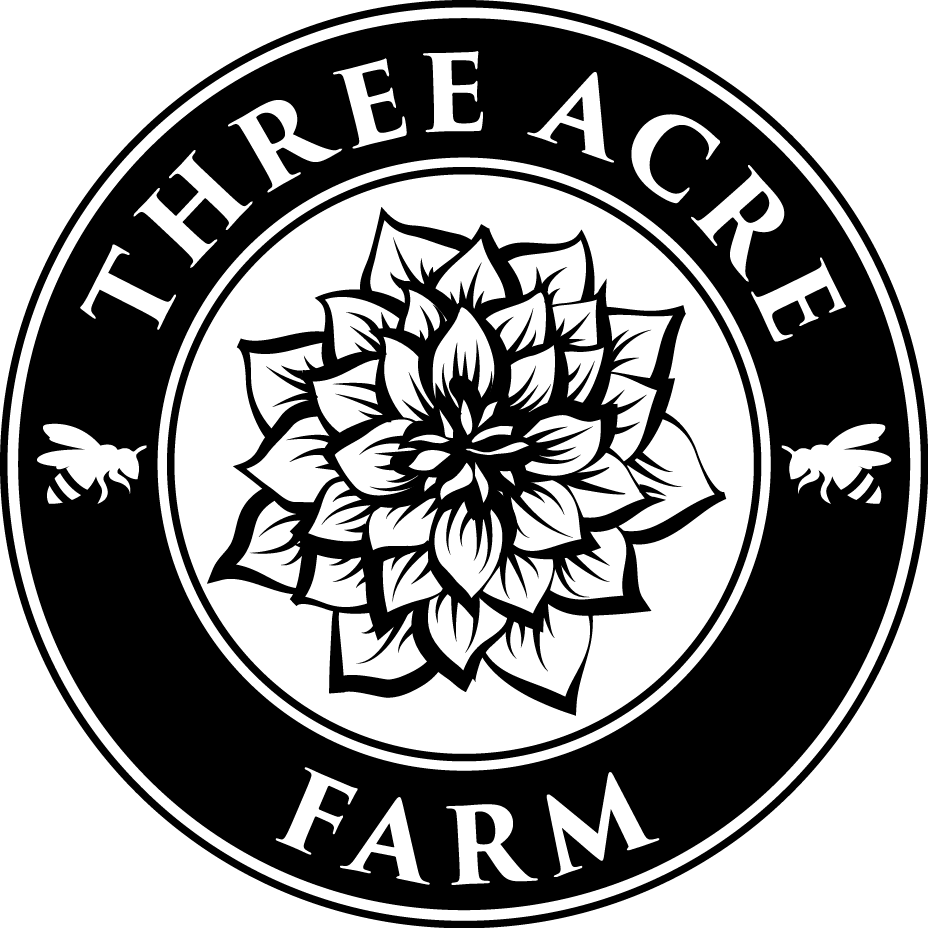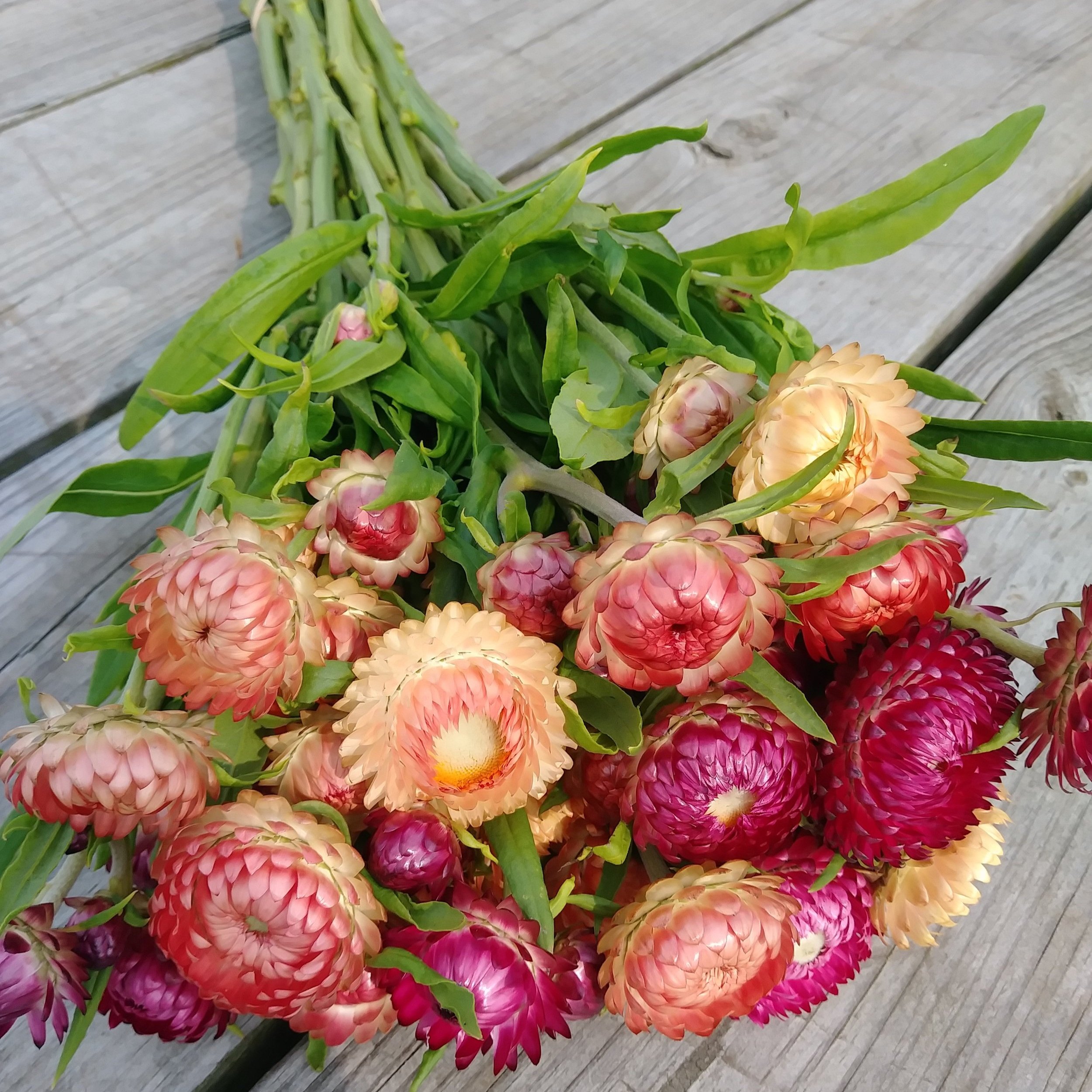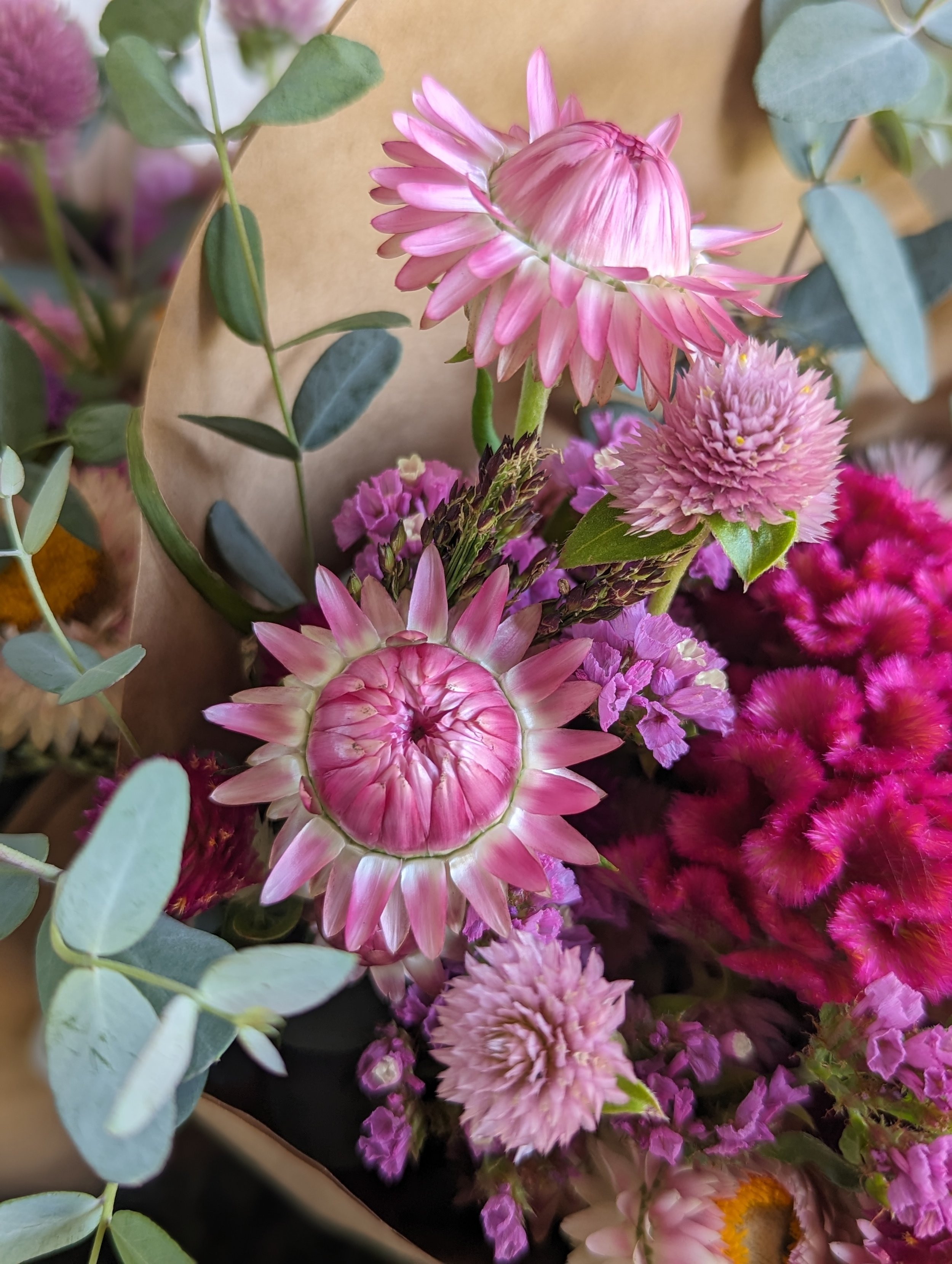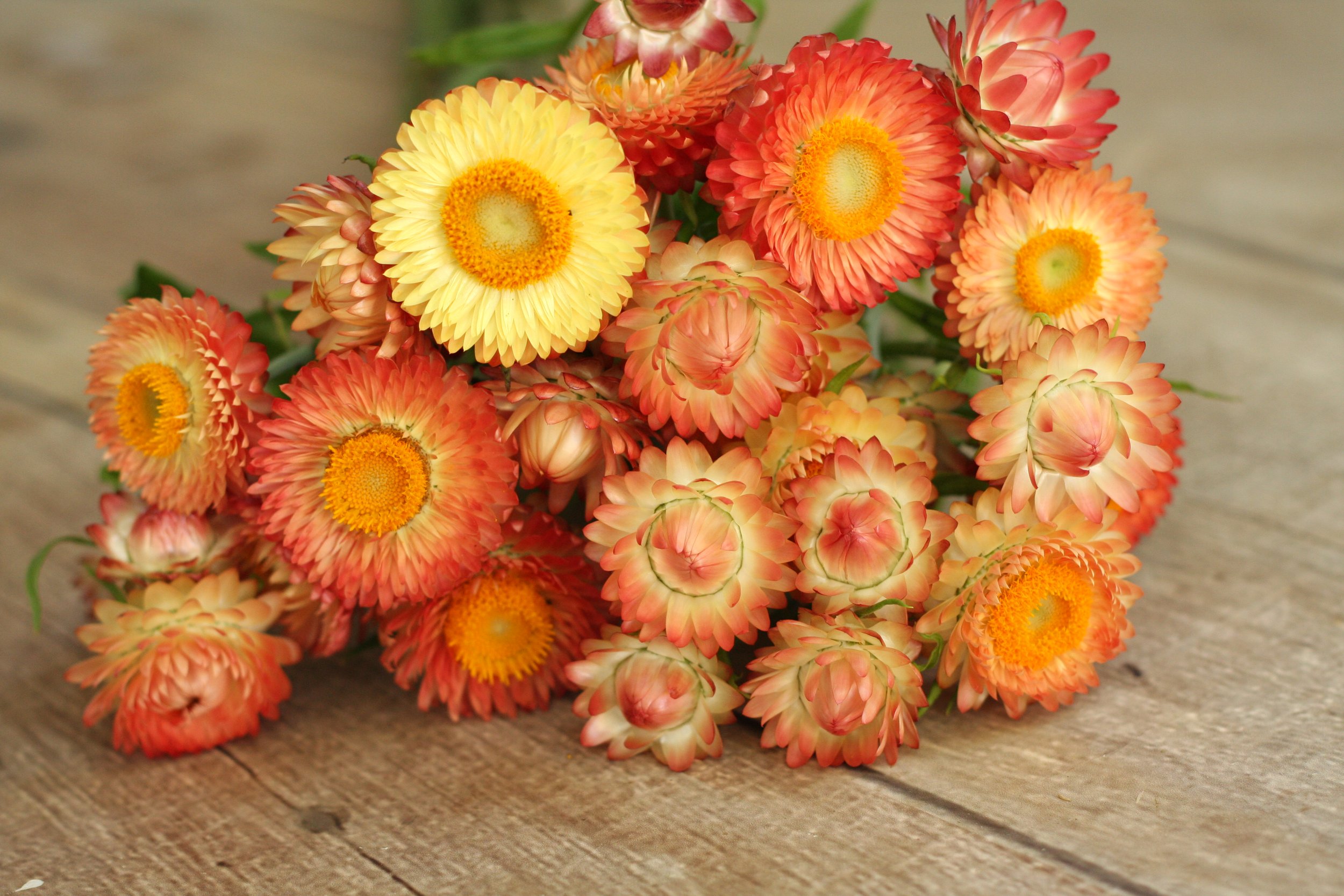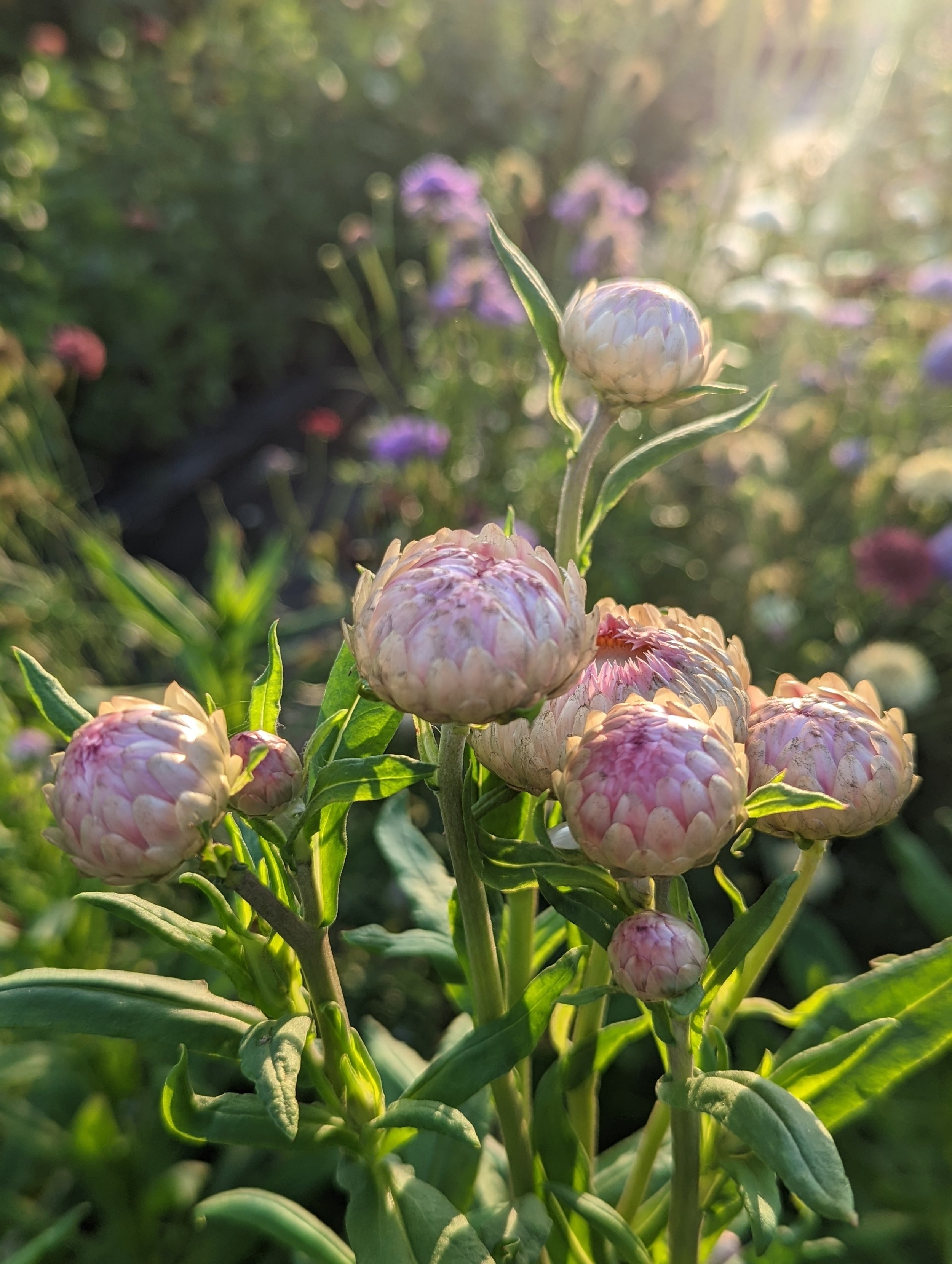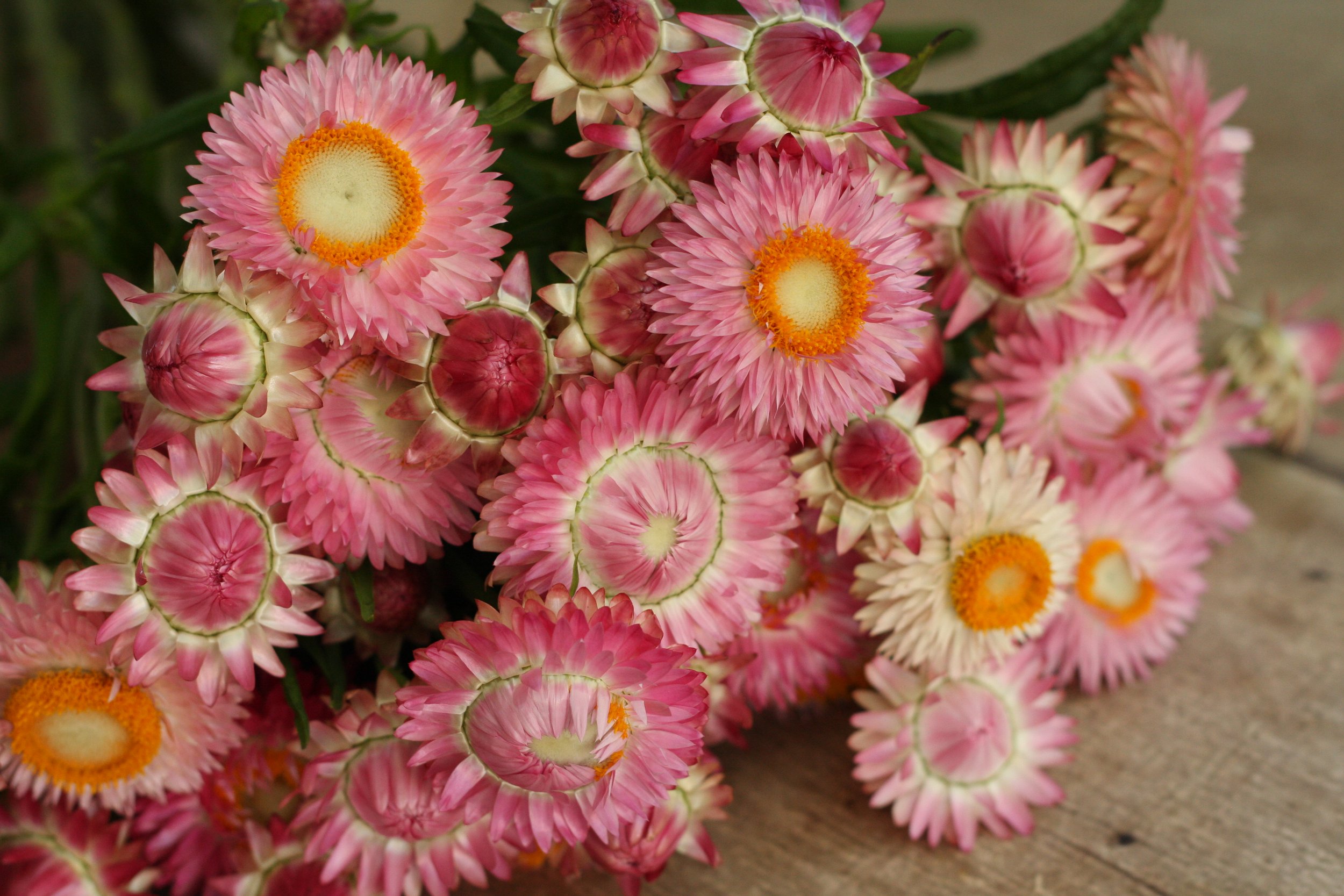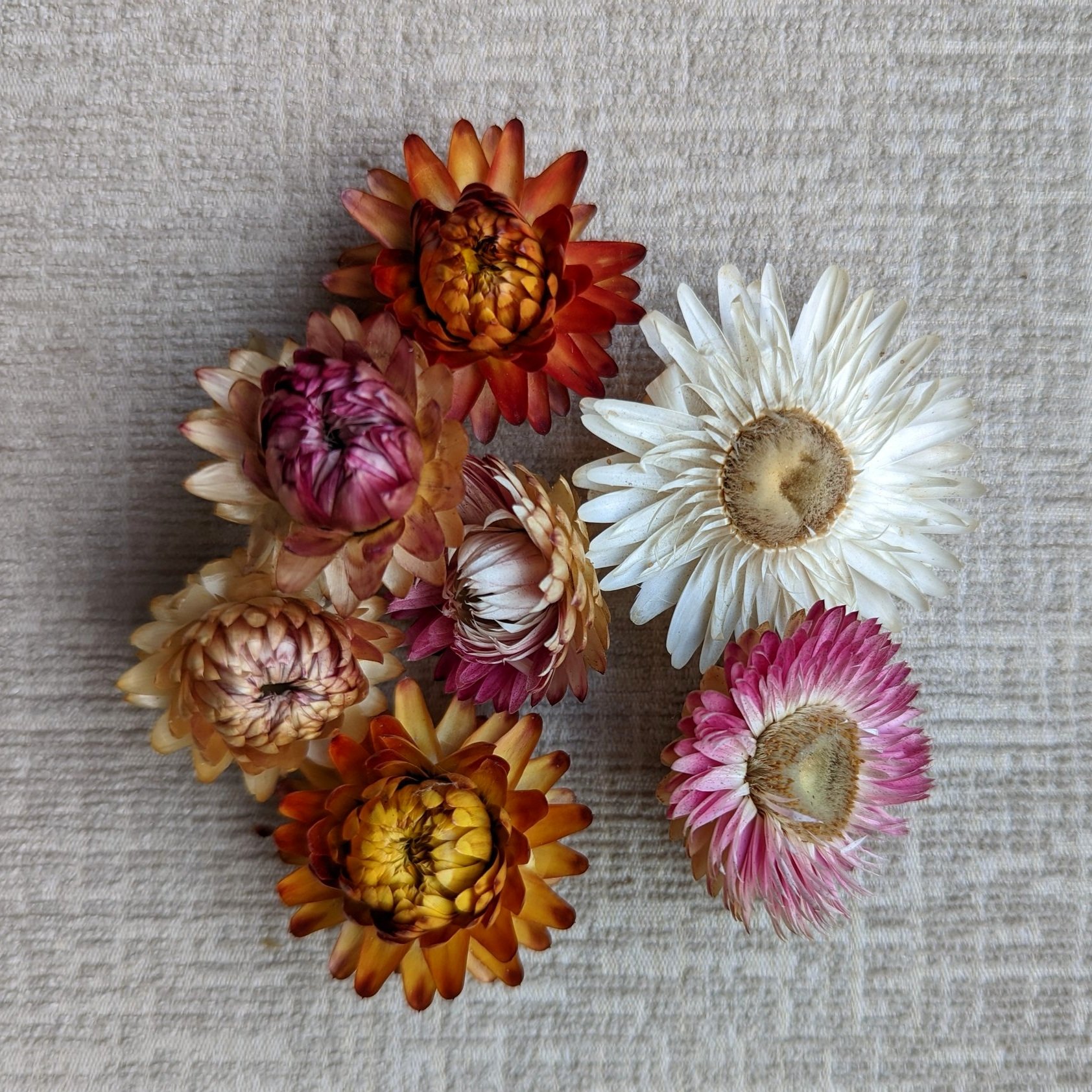How to Grow: Strawflowers
How to Grow: Strawflowers
Strawflowers are having a bit of a revival these days and I’m happy to see that!
I’ll admit, when I started growing flowers and thought of Strawflowers, I could only think of the harsh, gaudy dried flower arrangements I saw growing up in the 80’s. Blech.
Thankfully, plant breeders are now cultivating Strawflowers in soft, elegant tones and shades. They are so beautiful and unique that they even have a place now as a wedding flower.
Strawflowers are considered an “Everlasting Flower” and once they are dried, you can use them for years. I decorate my house all winter with dried Strawflowers…. And they are excellent as a “wearable” flower, for flower crowns, corsages or boutonnieres.
“Apricot” Strawflower
Let’s look at the Pros and Cons of growing Strawflowers for cut flower use.
PROS
They come in a multitude of colors and sizes.
They are easy to grow and actually thrive in poorer soils.
The plants are productive for a long period of time.
They have a long vase life of over 7 days.
They are an “Everlasting Flower”.
CONS
They are susceptible to Aster Yellows, a disease spread by leaf hoppers.
They can be tricky to germinate. Fresh seed from a reputable source is essential.
“Bright Rose” Strawflower
CHOOSING SEEDS
Strawflowers come in a variety of colors, so it really comes down to personal preference.
Personally, I prefer the pastel shades, as they are easier to incorporate into bouquets and arrangements, but the brighter colors have their place too.
Here are a few of my favorite Strawflowers to grow for cut flower use:
“Vintage White”
“Apricot” Strawflower
HOW TO SOW
Strawflowers are slightly cold hardy (they will survive a few light frosts in the fall), but we generally wait until after the last spring frost to put out the transplants. They are not fussy about soil conditions and in fact seem to prefer "poor" soil.
Transplants or Direct Sow?
For people with shorter growing seasons (like us in Michigan), transplants are recommended. Start the seeds indoors about 3-5 weeks before your last spring frost and transplant outside after the last frost.
Strawflowers can be direct sown in climates with a long growing season. Direct sow after the last spring frost.
PLANT SPACING
Plants should be spaced at 9-12”. The plants can grow up to 4 feet tall, so netting may be required if you live in a windy area.
Strawflowers are quite unsightly looking plants, so they might not be a plant you want to grow in a prominent spot.
“Apricot” Strawflower
“Silvery Rose” Strawflower
GROWING ON
Like all direct sown or transplanted seedlings, be sure the plants have consistent watering when they are small and getting established.
By the time the plants are large enough to bloom, they are quite self reliant. Deep watering once a week should be sufficient (water until soil is saturated as far down as you can stick your finger in the soil).
Pinch the plants when they are about a foot tall. This causes the plant to branch out and produce way more blooms.
If flowers are harvested and spent blooms are “deadheaded” (removed), the plants will continue to send up blooms until frost or cold weather arrives.
“Bright Rose” Strawflower
STAGE OF HARVEST
Knowing the correct stage of harvest for Strawflowers can be tricky. If harvested too early, they will flop over and not recover.
As with Zinnias, it can be helpful to perform the “Wiggle Test” with Strawflowers. Grasp the stem about 8” below the bloom and wiggle. If the bloom flops around, it’s not ready yet. Wait until the stem stiffens up more.
You can also gauge the stage of harvest by looking at the bloom. You want to harvest when the bloom is still mostly closed, as it will continue opening up after being cut. In the photo below, you can see the 2 blooms on the right were harvested too late and “blew open”. The others were harvested at the correct stage.
Note that the blooms close up at night and open again as the sun rises. While I always encourage harvesting early in the day, you may actually need to wait a few hours after sunrise to allow the flowers to open up a bit so you can get a better idea of what stage they are at.
As with all cut flowers, be sure to cut deeply into the plant between 2 sets of leaves, cutting stems at least 18” long. Deep cuts signal the plants to produce MORE flowers to replace the one you just cut.
POST HARVEST CARE
After harvest, allow stems to condition for a few hours in a cool, dark place in fresh water.
If you want to dry the blooms, you can hang them upside down in a warm, dry place out of direct sun. The stems may become fragile and break, but the blooms are quite study.
Some people prefer to dry the blooms on floral wire instead. To do this, simply pop the bloom off the stem, take a length of floral wire and stick it though the bottom of the bloom. Or you can simply allow the blooms to dry in a basket or bowl.
QUESTIONS?
Questions or comments? Leave them below and I’ll get back to you!
READY FOR MORE?
If you’re serious about growing the garden of your dreams this year, register for my online course, “Backyard Cutting Garden 101”. You’ll find everything you need to plan, grow, harvest and arrange your stunning blooms. I can’t WAIT to help you grow! Click on the button below for all the details.
